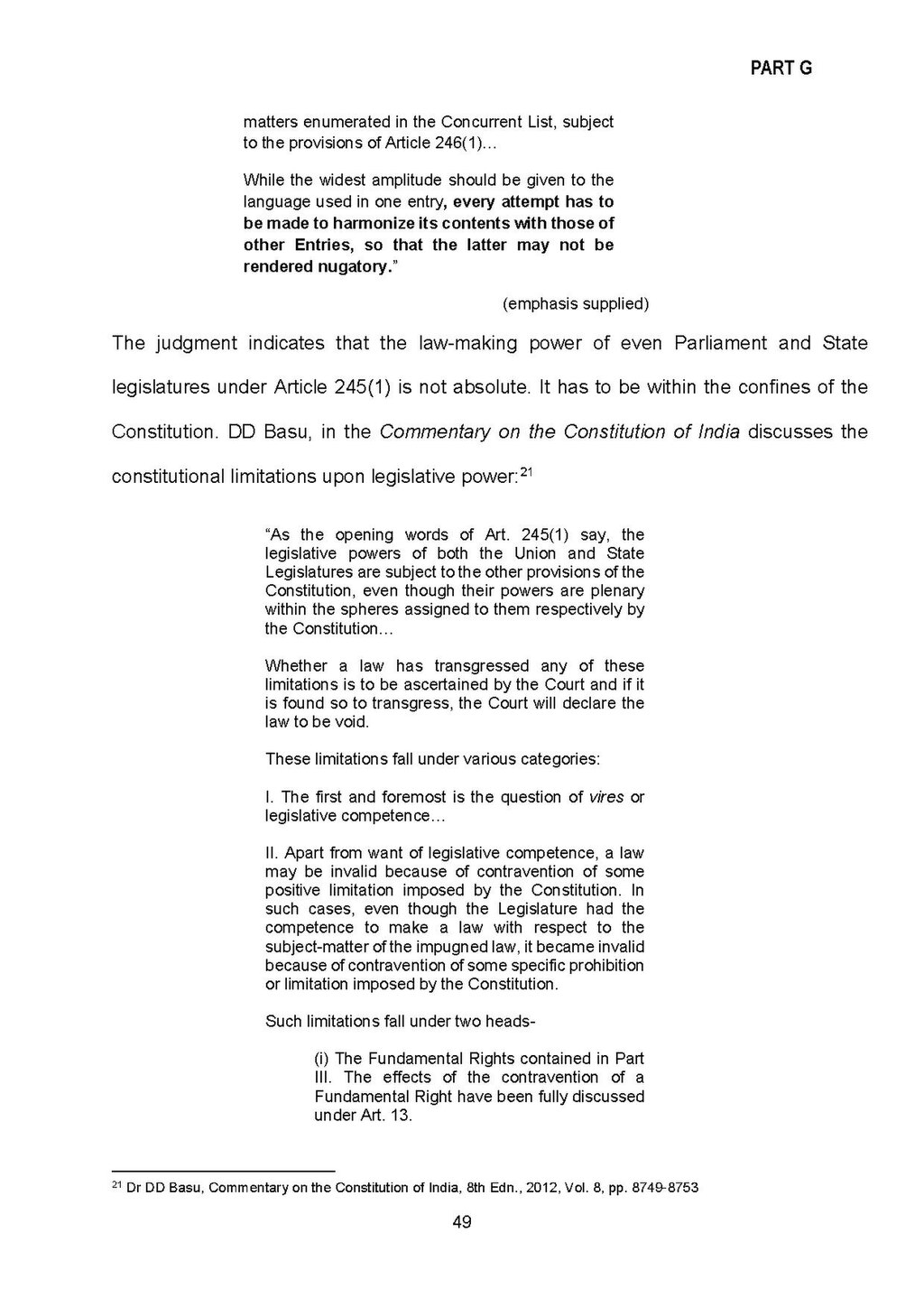matters enumerated in the Concurrent List, subject to the provisions of Article 246(1)…While the widest amplitude should be given to the language used in one entry, every attempt has to be made to harmonize its contents with those of other Entries, so that the latter may not be rendered nugatory.”
(emphasis supplied)
The judgment indicates that the law-making power of even Parliament and State legislatures under Article 245(1) is not absolute. It has to be within the confines of the Constitution. DD Basu, in the Commentary on the Constitution of India discusses the constitutional limitations upon legislative power:[1]
“As the opening words of Art. 245(1) say, the legislative powers of both the Union and State Legislatures are subject to the other provisions of the Constitution, even though their powers are plenary within the spheres assigned to them respectively by the Constitution…
Whether a law has transgressed any of these limitations is to be ascertained by the Court and if it is found so to transgress, the Court will declare the law to be void.
These limitations fall under various categories:
I. The first and foremost is the question of vires or legislative competence…
II. Apart from want of legislative competence, a law may be invalid because of contravention of some positive limitation imposed by the Constitution. In such cases, even though the Legislature had the competence to make a law with respect to the subject-matter of the impugned law, it became invalid because of contravention of some specific prohibition or limitation imposed by the Constitution.
Such limitations fall under two heads
(i) The Fundamental Rights contained in Part
III. The effects of the contravention of a Fundamental Right have been fully discussed under Art. 13.
49
- ↑ Dr DD Basu, Commentary on the Constitution of India, 8th Edn., 2012, Vol. 8, pp. 8749-8753
